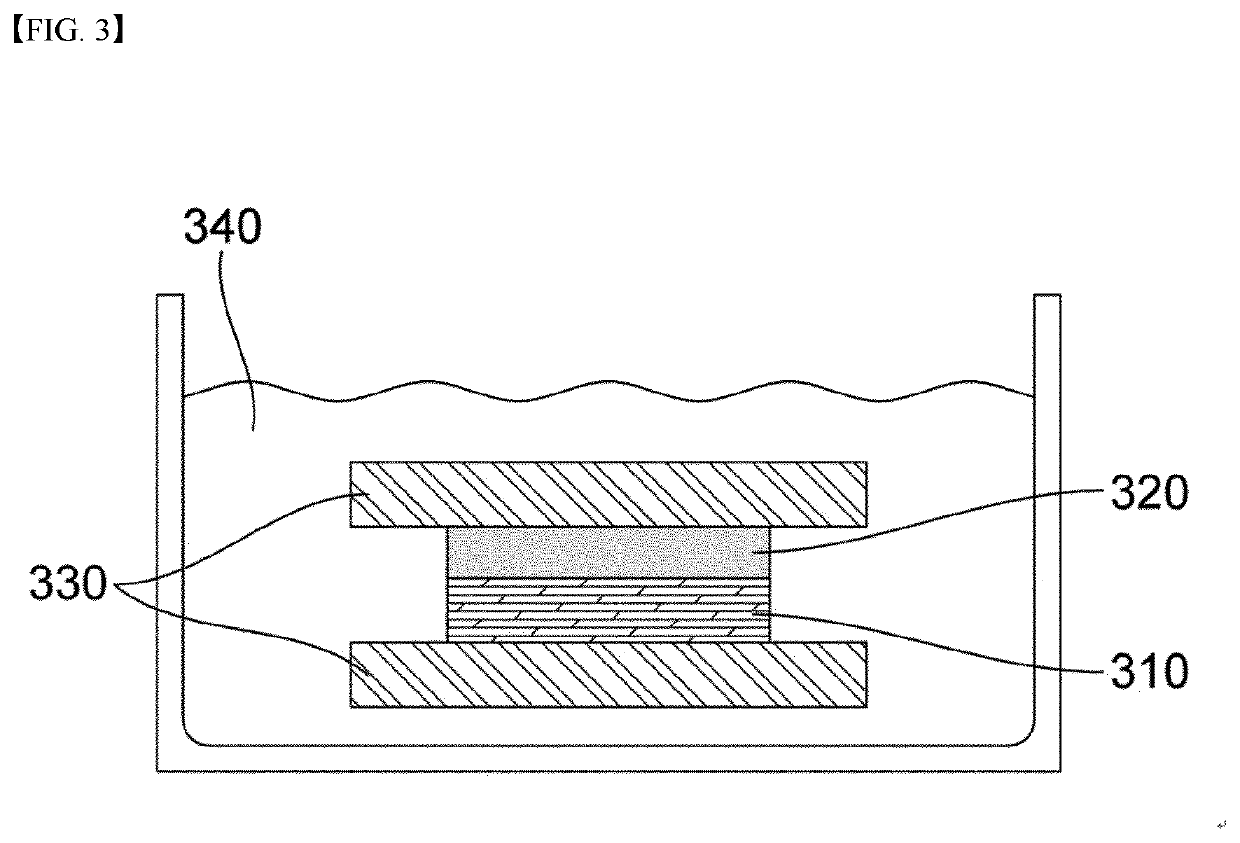Method for pre-lithiation of negative electrode for secondary battery
a secondary battery and negative electrode technology, applied in the direction of cell components, final product manufacturing, sustainable manufacturing/processing, etc., can solve the problems of reducing affecting the mechanical stability of the battery, and affecting the cycle characteristics, so as to reduce the contact loss of the electrode, shorten the time required, and minimize the volume change of the electrode
- Summary
- Abstract
- Description
- Claims
- Application Information
AI Technical Summary
Benefits of technology
Problems solved by technology
Method used
Image
Examples
example 1
[0124]Preparation of Negative Electrode
[0125]92% by weight of negative electrode active material with graphite and SiO mixed at a weight ratio of 3:7, 3% by weight of carbon black as a conductive material, 3% by weight of SBR as a binder, and 1.5% by weight of CMC as a thickener were added to a water-based solvent and mixed to thereby prepare a negative electrode mixture slurry. The negative electrode mixture slurry was applied to a negative electrode plate, a copper (Cu) thin film having a thickness of 10 μm, and dried to prepare a negative electrode, followed by roll press.
[0126]Pre-Lithiation Preparation (Electrolyte Impregnation) Process
[0127]Before the pre-lithiation process, the negative electrode was put into an electrolyte bath containing electrolyte, including 3% by weight vinylene carbonate, in which LiPF6 1M was dissolved in a solvent made of ethylene carbonate (EC) and ethyl methyl carbonate (EMC) in a volume ratio of 3:7, and was then impregnated (wetting) in the electr...
example 2
[0136]In the pre-lithiation preparation process, a pouch-type battery cell was prepared in the same manner as in Example 1, except that the vacuum was applied twice in total for 45 seconds.
example 3
[0137]In the pre-lithiation preparation process, a pouch-type battery cell was prepared in the same manner as in Example 1, except that the vacuum was repeatedly applied four times for 60 seconds.
PUM
| Property | Measurement | Unit |
|---|---|---|
| time | aaaaa | aaaaa |
| time | aaaaa | aaaaa |
| contact time | aaaaa | aaaaa |
Abstract
Description
Claims
Application Information
 Login to View More
Login to View More - R&D
- Intellectual Property
- Life Sciences
- Materials
- Tech Scout
- Unparalleled Data Quality
- Higher Quality Content
- 60% Fewer Hallucinations
Browse by: Latest US Patents, China's latest patents, Technical Efficacy Thesaurus, Application Domain, Technology Topic, Popular Technical Reports.
© 2025 PatSnap. All rights reserved.Legal|Privacy policy|Modern Slavery Act Transparency Statement|Sitemap|About US| Contact US: help@patsnap.com


